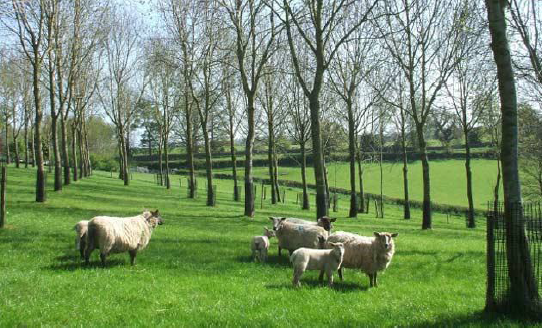Argyll Soil & Nutrient Network: 2nd meeting – event summary
26 February 2019Setting Priorities for Management of Your Soils
This was the second meeting of the Argyll Soil & Nutrient Network and the topics for discussion were soil nutrients, drainage, rush control and the role of forestry in farming.
The meeting began with indoor presentations by SAC Consulting's Dr. Bill Crooks and Peter Jones. Bill began by stressing the importance of understanding your soil's VESS assessment. Once you have identified and dealt with soil structural problems, the next important step is to correctly interpret the soil analysis and act on the information provided. The debate about the best management tool to eradicate rushes was brought up. Drainage of fields is one part of the solution - there is no quick fix, but pH analysis and rectification, topping, weed-wiping, and grazing all played their part also.
Bill also covered a multitude of pointers for farmer to consider should they wish to improve farm output. These included better use of fertiliser and inorganic nutrients, stressing the importance of a regularly reviewed nutrient budget. Soil testing is key and ought to be a 4-5 yearly activity to ensure that soil pH is managed effectively and not limiting the availability of nutrients to the crop. Bill's key points are:
- Getting pH status up gradually to between 5.8-6.1 depending on soil type. The benefits of this will be made to the overall output of the farm
- Better utilisation of P&K and the role magnesium has if magnesium lime is required
- Sulphur - is it really required? The way to confirm is to analyse your grass. Sulphur is found in slurry/feedstuffs/ and sea air, so make a considered decision before applying
- Investing in lime looking after drainage and a good rotation should lift the overall output of the farm.
- Look after your soil and it will look after you!
Peter Jones then took to the floor with a presentation 'Using Forestry For Resilience in Sheep Farming'. This illustrated the effect woodlands have to a farm business. The benefits range from providing a tax-free income on timber sales or grants, improved livestock performance, improved soil health and benefits to watercourses when the planting provides additional buffer strip areas which prevent diffuse pollution risks. Bringing the presentation to a practical level, he then demonstrated where planting could take place on areas at Drimvore in addition to the wooded areas already on farm.
Within his session, Peter highlighted various examples of funding regards planting woodlands and estimated the returns a farmer could receive over a five year period. Within Agro-forestry, silvo-pasture is an interesting concept that consists of strips of tree plantings being grazed by sheep. Other interesting discussions surrounded the access to grants for track infrastructure across a plantation site, which can then be used by farmers as access tracks. Peter's slides are available to download from the link at the bottom of the page.
- Using Forestry For Resilience in Sheep Farming – Presentation slides used by Peter Jones
- This is a copy of the presentation given by Peter Jones, SAC Consulting Forestry Specialist, during the second meeting of the Argyll Soil & Nutrient Network in February 2019.
- Topics: Crofts & Small Farms, Sheep, Crops and Soils and Environment
- Visual Evaluation of Soil Structure (VESS) Score Chart
- This is a downloadable copy of the Visual Evaluation of Soil Structure (VESS) score chart for use in-field.
- Topics: Soils
Sign up to the FAS newsletter
Receive updates on news, events and publications from Scotland’s Farm Advisory Service

